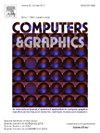3D-NLM: Voxel-based non-local means for 3D point cloud noise detection and smoothing
IF 2.8
4区 计算机科学
Q2 COMPUTER SCIENCE, SOFTWARE ENGINEERING
引用次数: 0
Abstract
Point cloud data has been widely used in 3D tasks such as object detection and surface reconstruction, which can be affected by the contained noise and outliers due to sensor limitations. This paper proposes a simple yet effective non-local means 3D point cloud denoising approach (3D-NLM) by leveraging local spatial and global structural information. The proposed method voxelizes the point cloud and formulates the 3D non-local means based on the voxel similarity estimation and an iterative update mechanism to identify noise points. Specifically, 3D-NLM takes the number of points in a voxel as the local spatial feature and utilizes Gaussian Mixture Models (GMM) to estimate the expected number of points from the global structural similarity with other voxel patches. Points that deviate significantly from the majority structure with the updated number of points, characterized using a Euclidean Minimum Spanning Tree (EMST). Consequently, the remaining points are identified as noise and can be directly removed. Alternatively, the intra- and inter-voxel 3D erosion strategy is designed to guide noise points moving towards the underlying surface for smoothing instead of removing. To evaluate the proposed method, we conduct extensive experiments on ModelNet40 and ShapeNet datasets with two types of noise under various metrics. The proposed method consistently outperforms baseline traditional and even learning-based methods, demonstrating it as a promising solution for point cloud denoising.

3D- nlm:基于体素的非局部方法,用于3D点云噪声检测和平滑
点云数据被广泛应用于物体检测和表面重建等三维任务中,但由于传感器的限制,点云数据会受到所含噪声和离群值的影响。利用局部空间和全局结构信息,提出了一种简单有效的非局部均值三维点云去噪方法(3D- nlm)。该方法对点云进行体素化,并基于体素相似度估计和迭代更新机制建立三维非局部均值来识别噪声点。具体来说,3D-NLM将体素中的点数作为局部空间特征,并利用高斯混合模型(Gaussian Mixture Models, GMM)从与其他体素补丁的全局结构相似性中估计期望的点数。使用欧几里得最小生成树(EMST)来描述与大多数结构明显偏离的点。因此,剩余的点被识别为噪声,可以直接去除。另外,体素内和体素间的3D侵蚀策略被设计为引导噪声点向下表面移动以平滑而不是去除。为了评估所提出的方法,我们在ModelNet40和ShapeNet数据集上进行了广泛的实验,这些数据集在不同度量下具有两种类型的噪声。所提出的方法始终优于基线传统方法甚至基于学习的方法,证明它是一种有前途的点云去噪解决方案。
本文章由计算机程序翻译,如有差异,请以英文原文为准。
求助全文
约1分钟内获得全文
求助全文
来源期刊

Computers & Graphics-Uk
工程技术-计算机:软件工程
CiteScore
5.30
自引率
12.00%
发文量
173
审稿时长
38 days
期刊介绍:
Computers & Graphics is dedicated to disseminate information on research and applications of computer graphics (CG) techniques. The journal encourages articles on:
1. Research and applications of interactive computer graphics. We are particularly interested in novel interaction techniques and applications of CG to problem domains.
2. State-of-the-art papers on late-breaking, cutting-edge research on CG.
3. Information on innovative uses of graphics principles and technologies.
4. Tutorial papers on both teaching CG principles and innovative uses of CG in education.
 求助内容:
求助内容: 应助结果提醒方式:
应助结果提醒方式:


